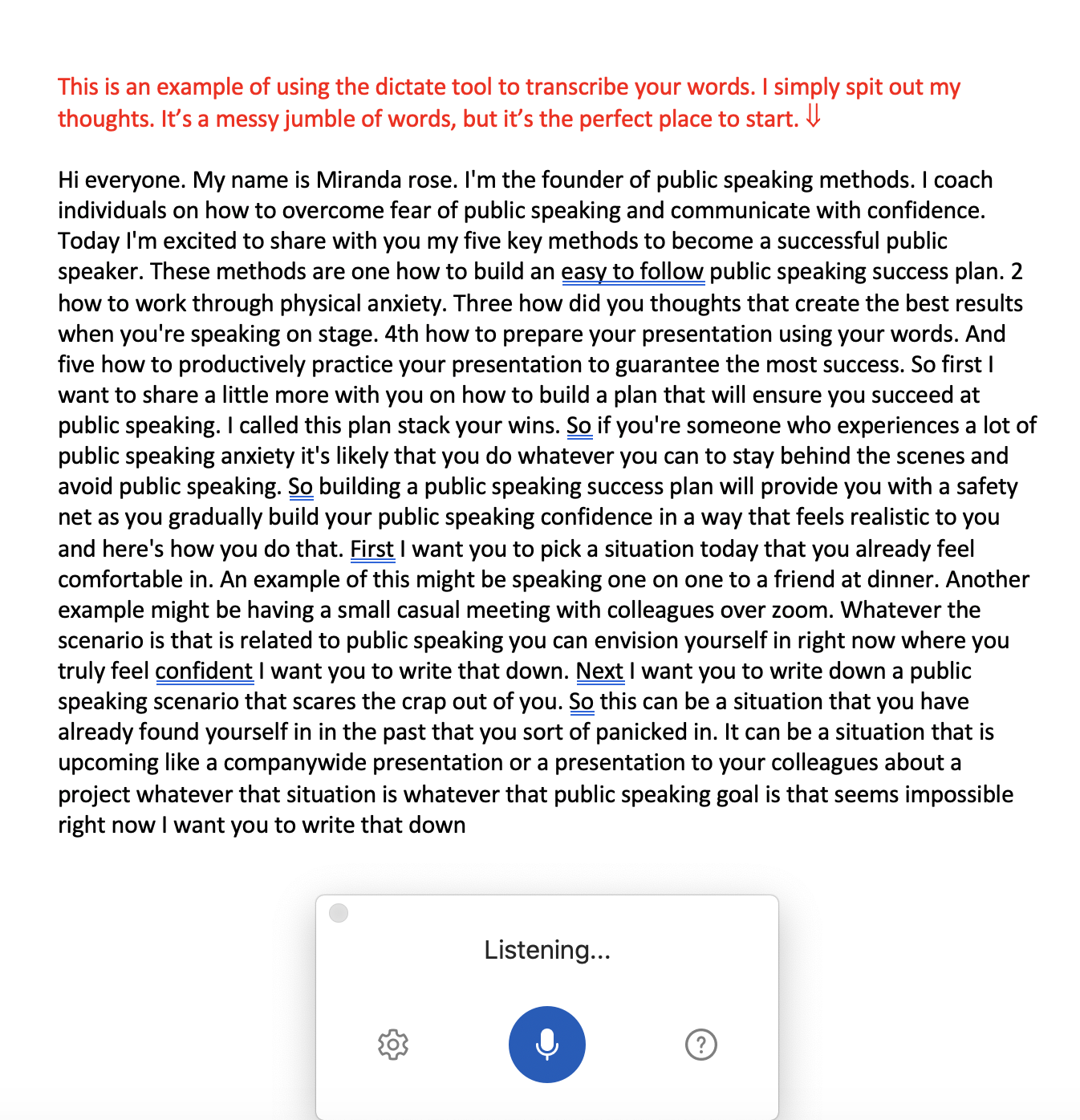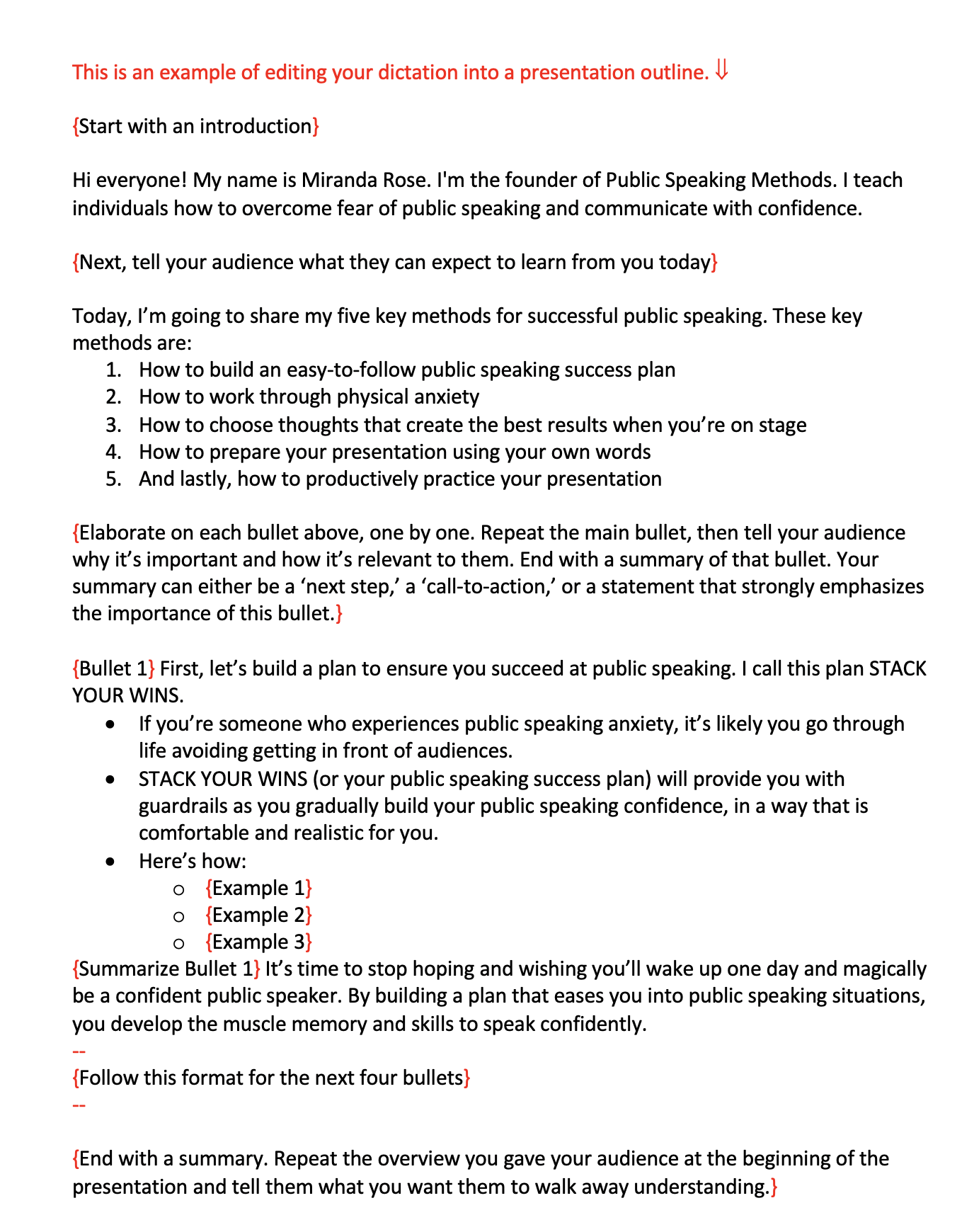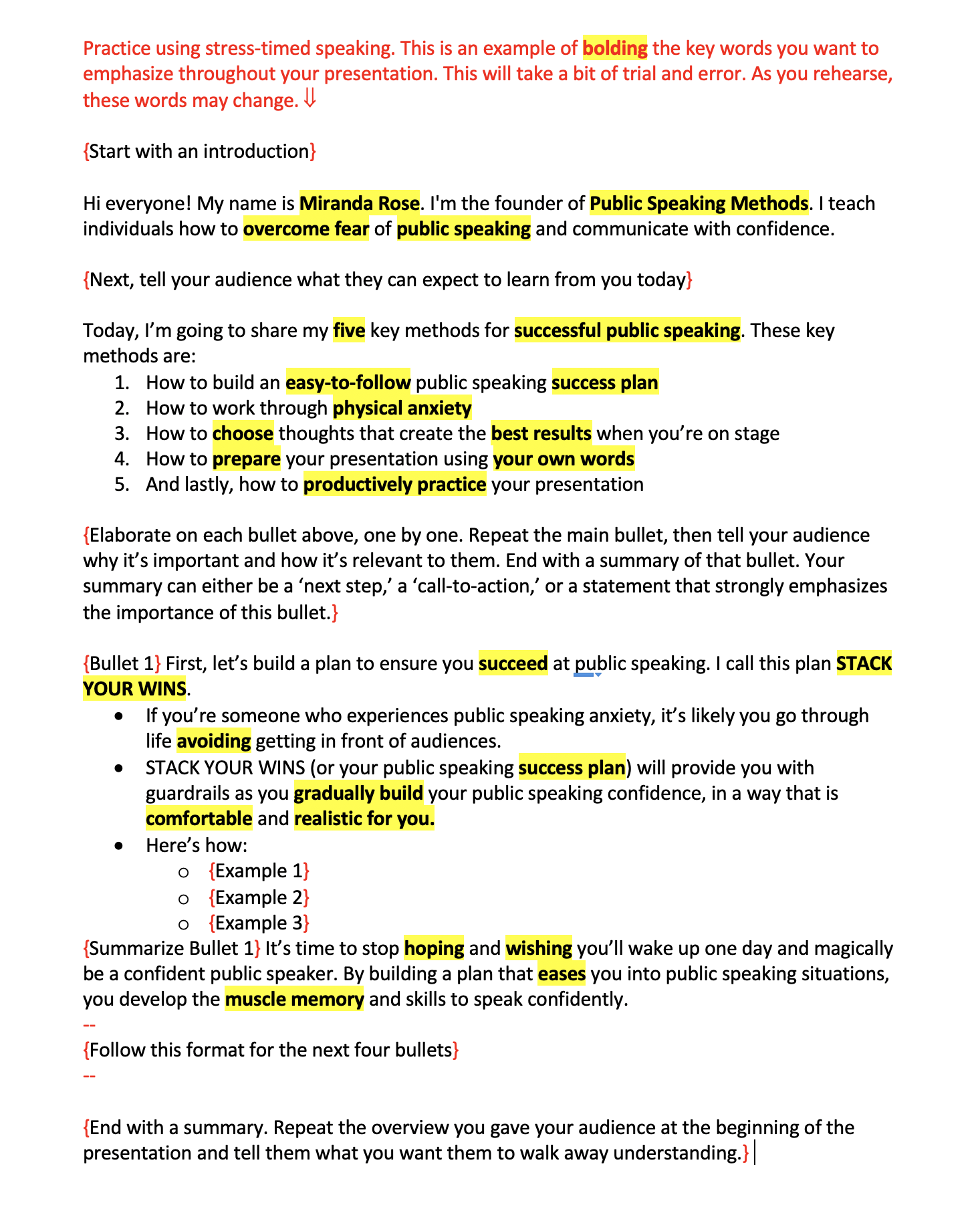5 Tips to Manage Anxiety When Public Speaking [With Images]
Years before I became a public speaking coach, I suffered from major public speaking anxiety. Somewhere between my high school and college years, I became acutely sensitive to the idea of being judged by my peers. I found myself feeling dizzy with nerves during class presentations, forcing my shaky voice to answer questions in front of groups, and avoiding situations that would put me in the spotlight. Meanwhile, I witnessed those around me speak publicly with ease and confidence. I constantly wondered if I would I ever be as good as them.
After college, I spent over a decade working in corporate marketing and communications. For many of these years, I worked with executive leaders to prepare keynote presentations, scripts for media interviews, and speeches. I took pride in my work, but I also felt frustrated with myself. How was it that I was able to prepare others to speak in front of hundreds, sometimes thousands, of people – yet I did everything in my power to hide behind the scenes?
I knew I was only getting in my own way, and I became tired of holding back my career and personal growth. I made the scary (er, horrifying) decision to tackle my stage fright head on. I enrolled in training courses, sought out speech coaches, read books, and listened to podcasts on repeat. It took me years to make it through the tornado of lessons, theories, exercises, and mantras – from Toastmasters to apps like Speeko – and come out on the other side as someone who is truly excited about speaking in front of audiences today.
Some of the things I learned worked, and many of the things didn’t. I’ve taken the most effective methods and tailored them to fit real-world situations. My goal is for Public Speaking Methods help you speak with confidence in just weeks or months – not years.
Here are five of my favorite tips for overcoming public speaking fear and communicating with confidence.
#1: Use your own words
Trouble figuring out how to write a speech? Building your speech or presentation around the words you naturally use will help boost your confidence. The very first step is to simply talk to yourself about your topic.
Find a private space where you can speak aloud, even if you're just rambling thoughts at first. Capture your words by recording yourself using the "dictate" tool in a Word document on your computer or the "speech to text" tool in the notepad on your phone.
Use your recorded transcript as your baseline. Edit and develop it into your final presentation script or PowerPoint.
How to use this method:
If you’re using a Word doc, click the dictate button (marked in red).
A little box will appear at the bottom of your screen. Make sure the box says, “Listening,” and start talking! Yes, you’ll ramble. No, it won’t be perfect. Just keep going. To pause the recording, hit the blue mic button. [Example in the gallery below.]
I like to compare this step to creating a beautiful clay sculpture. Artists start with a giant mound of amorphous clay and slowly mold it until it becomes a cohesive piece. It takes patience and practice. Similarly, you’re starting with a ball of words that might not make sense, but by slowly chipping away at your message, you’ll arrive at a polished script.



The transcript won’t be perfect; fix any spelling or punctuation errors. Once that’s done, edit it down into a simple outline using the key messages you spot throughout the transcript. A few tips for editing:
Find three to five key points in your transcript. Highlight these key points. They are your baseline for your presentation/speech outline. Beneath each key point, add in three related sub bullets [Example in the gallery to the left]:
1. What do you want your audience to know?
2. Why should they care about this information?
3. What’s the key takeaway or next step?
Review your transcript again and copy and paste any sentences that fit into your outline as supporting statements. You can also, of course, type in any new ideas that come to mind.
#2: Engage your audience with stress-timed speaking
Avoid speaking too quickly or mumbling by emphasizing your most important words. Stressing key terms, numbers, and facts will keep your audience's attention. [Example in the gallery to the left.]
How to use this method:
Read through your edited transcript and highlight the most important words, numbers, and facts in bold.
Slowly read through your script and overly emphasize the highlighted words.
Do this several times until you feel comfortable reading through the script. You will likely edit it a few times in this process.
#3: Talk to yourself
Instead of just thinking about what you might say in that next meeting, how you'll introduce yourself, or how you'll answer a question during your presentation, take a moment to say these words aloud and get used to hearing your voice.
How to use this method:
Find little quiet opportunities – in the shower, while doing laundry, while driving – to get comfortable with the sound of your own voice.
#4: Squeeze, don’t shake
If you feel yourself start to shake with nerves during a presentation, squeeze your thighs or clasp your hands together to stop the jitters. Trust me, it works!
How to use this method:
Clasping your hands and folding them in front of you can help ground you. While the verdict is still out on whether these types of “power poses” make you feel more confident, I can tell you that this move always works for me.
Holding a mic or a clicker? If both hands aren’t free, you can simply clench one fist. Rather than show your nerves, this gesture can communicate excitement.
Steady your shaky body by squeezing your thighs together. The best part: this is a move you can do while sitting or standing without your audience noticing.
#5: Plan for nerves in advance
Create a public speaking success plan that allows space for nervousness during your gradual growth.